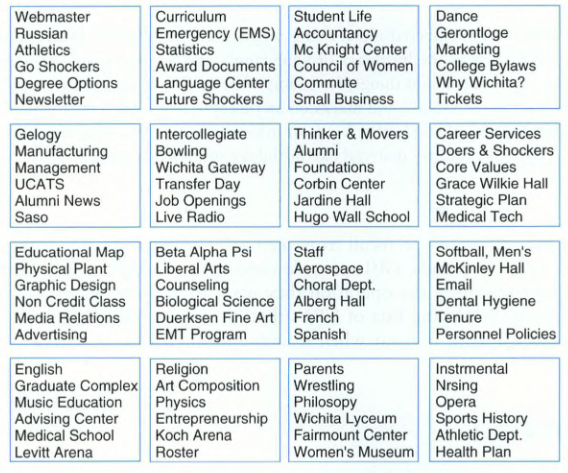Cognition Concept
![]()
In this article, I will look into the different Cognition aspects to understand what we humans are good and bad at.
The definition of cognition is defined as:
"The mental action or process of acquiring knowledge and understanding through thought, experience, and the senses."
There is a lot of different Cognition, like thinking, remembering, learning, daydreaming, decision making, seeing, reading, writing and talking. (Norman, 1993)
Norman also says there are different kinds cognition on how our human brain works the first is experiential cognition and the other one is reflective cognition. These different states are how our brain perceives, acts and react to different scenarios, we meet in our daily life to make them effectively and effortlessly. This could be when we a having a normal conversation or driving our car we do it effectively and effortlessly. But before that, we need to reach a certain level of expertise and engagement. Before we can drive a car effectively and effortlessly, which is what Norman says is experiential cognition. Then he describes reflective cognition which involved thinking, comparing and decision making. (Preece, Sharp, and Rogers, 2015) (Norman, 1993)
This is what leads us to be creative and create new ideas we do this when we are designing new products or learning new things. Norman says these different types of cognition is key for our everyday life to work.
There are also different types of processes that are involved in cognition which we will describe later in this chapter, but some of the following processes are: (Preece, Sharp, and Rogers, 2015)
• Attention
• Perception
• Memory
But before I will describe the different processes, it is important to note that these processes are interdependent. Because when you are doing a certain task and activity, you may need to use different types of processes to perform. An example could be when you driving your car to work or school, you have to remember-, how to drive the car, but also have attention to your surrounding environment. But you also have to make a decision, when you need to turn left or avoid a car. All these processes are used when you driving the car.
Attention
Is a process where we select things we want to concentrate on at a given time, which involves our auditory or visual senses. (Preece, Sharp, and Rogers, 2015) What attention does for us is that it allows us to focus on certain information that is relevant for us. But this process can both be easy or difficult depends on how the information is presented to us.
On the figure, 1.1 and 1.2 is an example of how a salient environment can make it difficult or easy to find information. On figure 1.1 the information is grouped together into vertical categories, wherein figure 1.2 the information is bunched up together which makes it harder to search through (Preece, Sharp, and Rogers, 2015)

Figure 1.1(Information grouped together in vertical categories)

Figure 1.2 (Information bunched up together)
Perception
Is a process on how we acquired different information from our surrounding area by using our natural sense organs like our: eyes, ears, fingers. (Preece, Sharp, and Rogers, 2015) When we are dealing with the perception which is a complex cognitive process because it involves other cognitive processes as memory, attention, and language. Also, when we are collecting information the primary sense is using our vision. So, it is important as an interaction designer to present our information to the users so they can collect the information in the manner intended. Which is demonstrated in figure 1.1 and 1.2 where just by categorizing by using blank space makes it much easier for the user to gather information instead of having it bunch together which makes it much harder to interpret. So, when designing it is important to design so the information is perceptible and recognizable.
Memory
Our memory allows us to recall different kinds of information we gathered which allows us to act on different scenarios and act appropriately based on our memory. But our memory is good to remember something easily like someones' face, the person’s name and even the last conversation we had with them. But something is not possible for us to remember from our memory like what we see, see, hear, smell. All the things our sense gather of information but if we did remember all this information our mind will simply become overloaded with information. So our brain has a filtering process that our mind is using to chose which information will be processed and stored in our memory. But this process is not perfect often we will forget things that we really wanted to remember and sometimes we remember things that we want to forget.
So the way brain filtering things is the more attention we paid to something makes it easier for us to remember it. Because we are thinking about and comparing the knowledge we gather with other information. This makes it more likely to be remembered for us because we are spending more time on processing the information and paying more attention. When we are remembering things, we have it much easier to remember things that are visual like the last musical album or the cover of the book we bought last week. But we struggle with remembering and randoms element like birthdays or the new phone number that our friend just got.
On the figure, 2 and 2.1 below is an example of how to help people to find information on webpage easier with the help of using the border as a grouping instead of color contrasting which hinders it. (Preece, Sharp, and Rogers, 2015)

Figure 2 (structuring information by using color contrasting)

Figure 2.1(structuring information by using border)
This articale is just a overview of some of the processes in cognition i recomend people to read the book "Predictably irrational" by Ariely, D and Jones, S. and "Interaction design beyond Human-Computer interaction" Preece, J., Sharp H. and Rogers, Y) for more in depth information.
Thanks for reading...
Reference:
Ariely, D. and Jones, S. (2008). Predictably irrational. New York: Harper Audio.
Preece, J., Sharp, H. and Rogers, Y. (2015). INTERACTION DESIGN - BEYOND HUMAN-COMPUTER INTERACTION 4E. Chichester: Wiley.